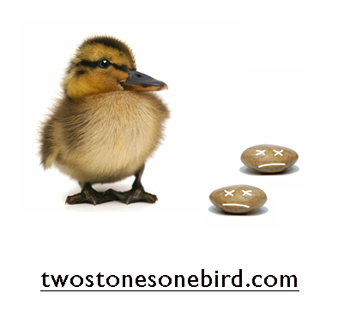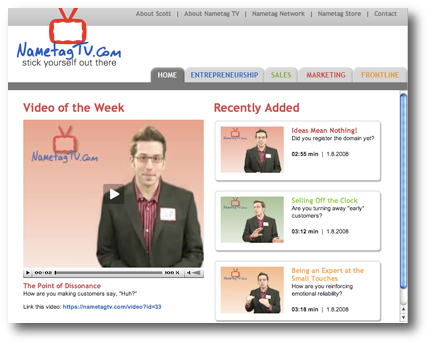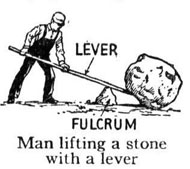
THE essential word in entrepreneurship is leverage.
It means, “To increase the rate of return from an investment.”
And it’s not just something you do.
Leveraging is an attitude.
A lifestyle. A pattern of thinking. An approach to business.
Always thinking about what’s next.
Always creating with the end in mind.
Always transforming your thoughts to things.
AFTER ALL: Ideas are free. But execution is priceless.
That’s what makes entrepreneurs successful — they learn how to transform even the smallest events, situations, experiences or ideas into breakthroughs.
IN SHORT: They always kill two stones with one bird.
That’s right. You read it correctly. Two stones, one bird.
So, today will be the first in a series of posts about leveraging. I’ll do my best to write a new one (roughly) once a week.
NOTE: For future reference, you can keep up with this post series at www.twostonesonebird.com.
– – –
Now, in my experience, I’ve found leveraging to be a function of QREATIVITY; that is, asking yourself constant, creative questions.
So, here’s your list of Leverage Questions for today:
1. Where can you create the most leverage? This basic question lays a foundation of expansion and growth that will help you kill two stones with one bird with every idea, situation or experience.
Again, the word leverage means, “To increase the rate of return on an investment.” So, whether it’s an investment of time, energy, capital or attention, there’s always SOME way you can leverage it.
REMEMBER: Ideas mean NOTHING without leverage.
2. Are you recognizing when life is giving you a gift? Part of being the luckiest person you know realizing that you’ve been lucky. Paying attention. Plucking from the world around you. Noticing when opportunities are presenting themselves and immediately responding to them.
So, from ideas to people to situations, never forget to give thanks for all these great gifts life gives you! That way, life gives you more of them! See, the universe is participative. That which you appreciate appreciates.
REMEMBER: Success doesn’t come unpartnered. Recognize that you’re not alone and show appreciation for the gifts you’ve been given.
3. Are you saving your bad ideas for later? Bad doesn’t mean always “terrible.” It COULD simply mean “bad timing.”
Keep your unused ideas around, just in case. Revisit them regularly. You never know, something that sucked five years ago might be GOLD today!
REMEMBER: Even bad ideas have their place.
4. Did you buy the domain first? The word domain comes from the Latin dominium, which means “property.”
LESSON LEARNED: The minute you get a great idea, register the website.
Even if you’re totally broke.
Even if you’re not sure if your idea will work.
Even if you’re years away from the final product.
Buy the domain.
Websites are the new real estate.
REMEMBER: He who owns the domain owns the idea.
5. Did you google it first? Before you get too carried away with your new idea, you should probably google it first. Just to make sure someone else hasn’t already thought of it. Cheapest and most effective market research in the world!
REMEMBER: If it doesn’t exist on Google, it’s yours for the taking.
6. How can you do the work once and benefit many times? This is the key to duplication, multiplication and ultimately, replacing yourself.
You need to build a foundation.
Now, maybe that means writing. Or setting up systems. Or making a business process self-sufficient. Whatever you do, constantly ask yourself, “How can I do the work once and benefit many times?”
REMEMBER: Take yourself out of the equation.
7. How can you make this into your own? Because there’s nothing new under the sun, the key differentiator is process.
Delivery. Voice. Medium, not message.
That’s why you need to “notice things and give them names,” as Seth Godin explains.
Observe, watch, read, pluck and listen to your environment. Content is just BEGGING to be captured! You need to create names, designations and titles for the things you notice. They must be original, creative and consistent with the branding of your content and philosophies.
REMEMBER: Don’t copy, don’t imitate – put your own spin on it.
Read part two of this series!
LET ME ASK YA THIS…
What’s your best Leverage Question?
LET ME SUGGEST THIS…
Share it here!
* * * *
Scott Ginsberg
That Guy with the Nametag
[email protected]
…tomorrow NametagTV.com goes ON AIR!


 The most important TWO WORDS in your entrepreneurial lexicon are:
The most important TWO WORDS in your entrepreneurial lexicon are: